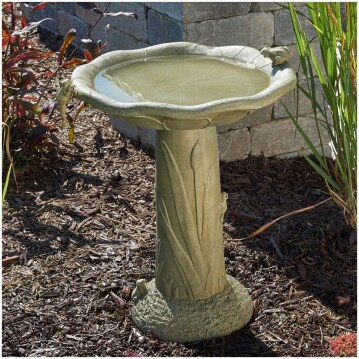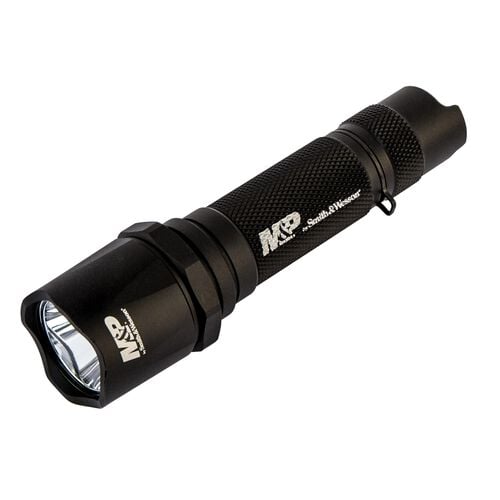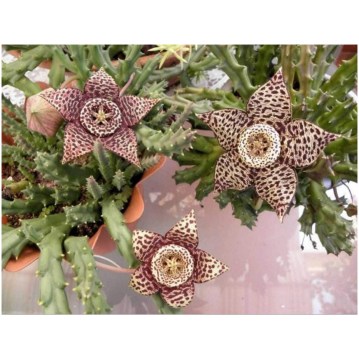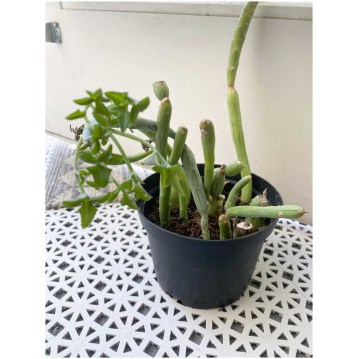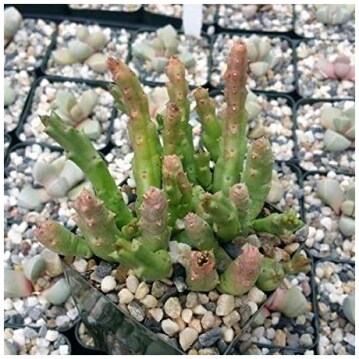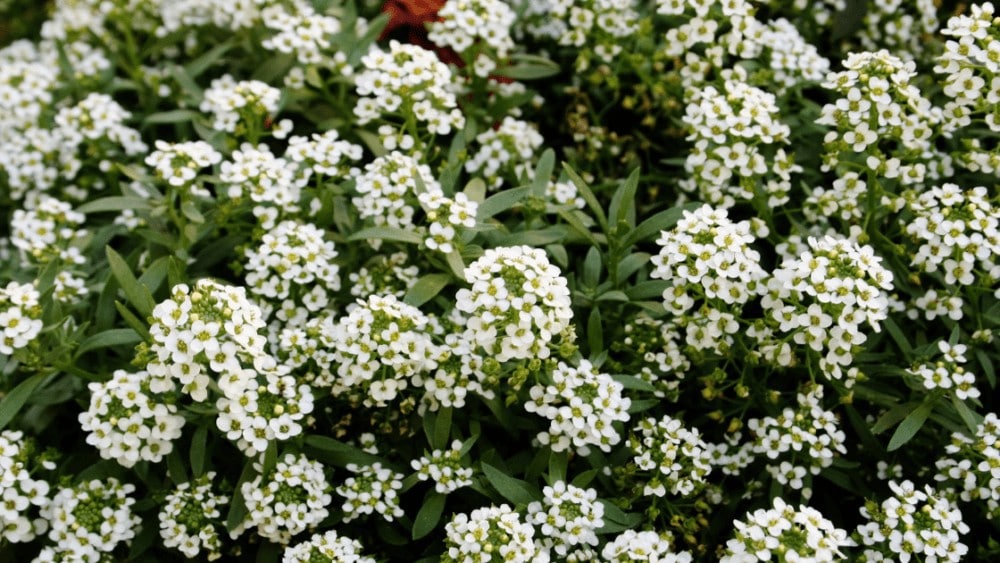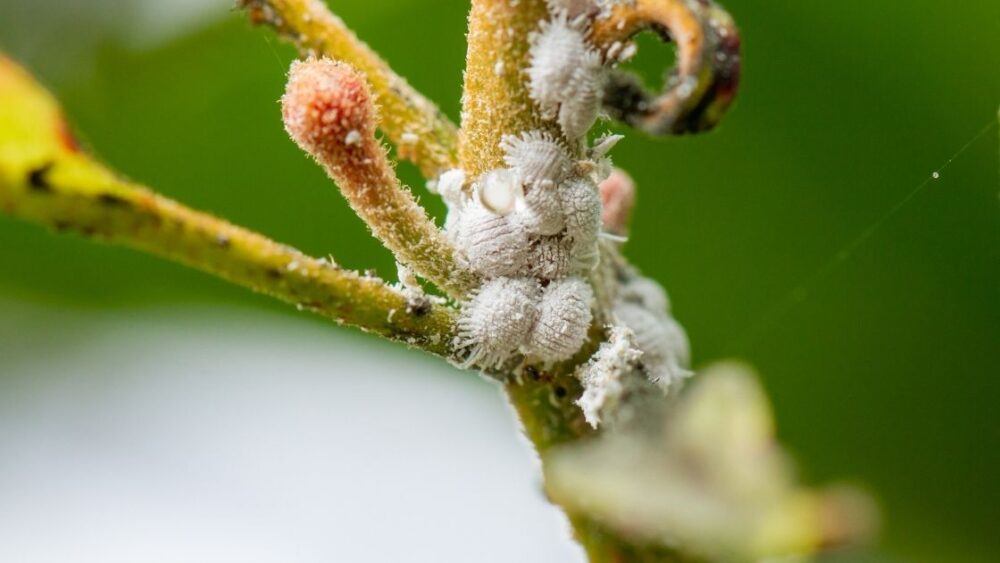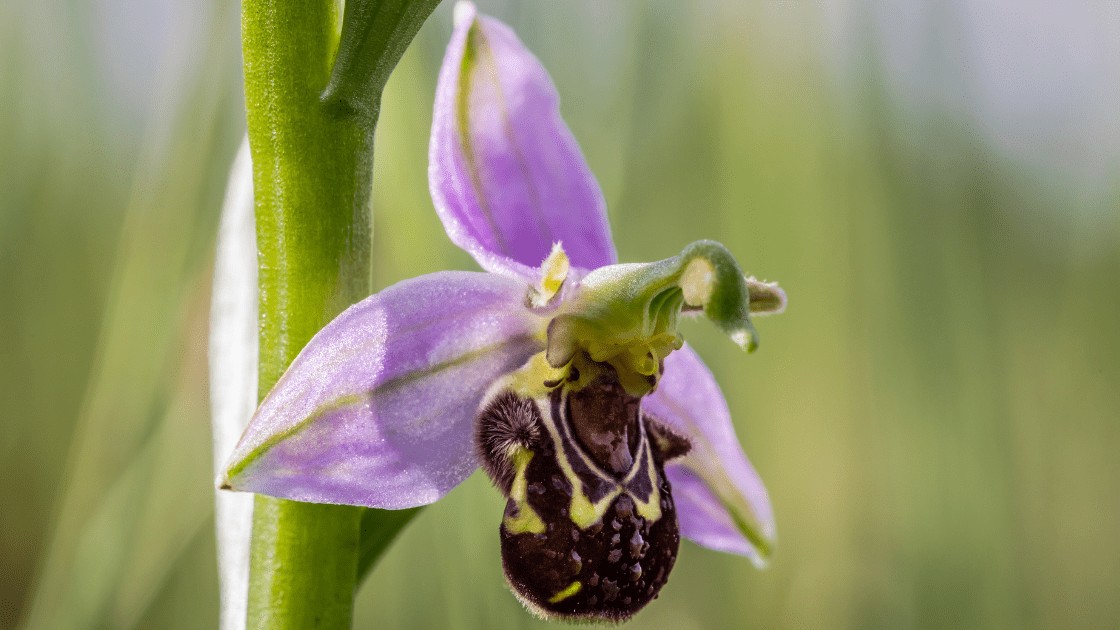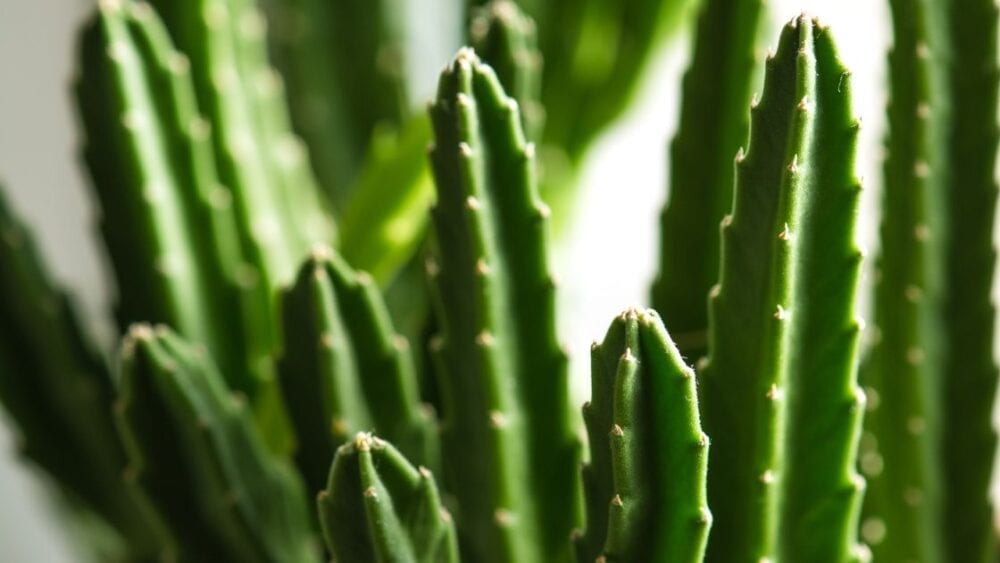
Although Stapelia is one of the easiest plants to care for and propagate, this succulent can still experience wilting and drooping. These issues arise from a range of conditions such as lack of light, overwatering, too much heat, certain pest, and unfavorable soil conditions. In the following we will learn how we can identify them and deal with them quickly and efficiently!
What Causes Stapelia to Wilt?
All members of the Asclepiadoideae sub-family which the Stapelieae tribe is a part of are sensitive to overwatering and to high organic content (humus) in the soil.
The most common causes of wilting in Stapelia are overwatering, an unsuitable soil, lack of light or high night temperatures. Pest infestations should also be considered. Let’s take a closer look at each individual cause and a few others and learn how to deal with them:
Browse our Affiliate Products
Dehydration
This is an obvious reason for wilting and it resolves in a matter of hours after the plant is watered. If wilting occurs despite the soil being moist, consider any of the other reasons below.
Heat stress
If the plant has been growing in a greenhouse and you suddenly place it in direct sunlight, severe wilting may develop, even if the soil has some moisture. The plant needs to
gradually adapt to the more stressful, full-sun conditions – this process can take around a month of gradual exposure.
Overwatering leading to rotting
The rotting caused by overwatering can be visible or invisible – it can affect the root system, in which case the water transport will be greatly affected, leading to wilting. The rotting can also be visible and be base of the plant may become ‘mushy’ or yellow.
This can be caused both by overwatering and by compacted soil. In both cases, repotting will be necessary, during which you should carefully clean up the roots and get rid of rotting fibers. After repotting, you may need to use a humidity dome to prevent wilting while the plant establishes new roots.
Stem rot / Base rot
Sometimes, the base of the body (where it meets the soil) starts becoming black, drying up and shriveling. This has many causes and is commonly caused by pests, including fungal infections.
While attempting to cure the problem, it’s a good idea to take a few cuttings and root them in case the original plant dies. Stems that have started exhibiting this symptom are usually permanently damaged, but because Stapelia develops multiple stems, this doesn’t necessarily spell death for the whole plant.
Unsuitable soil
Stapelia often doesn’t do well in very rich soils that have a lot of humus. It’s also sensitive to peat, which is rarely contained in cactus potting mixes. Unfortunately, it’s not easy to determine if the soil is to blame, especially if you don’t know its origin. Once you’ve excluded overwatering, light deficiency and pests as the cause of the wilting, repotting in a different, more sandy soil may be your best bet.
Lack of light
Light deficiency symptoms can mimic those of overwatering and can also lead to yellowing, wilting and general poor health of Stapelia plants. If the Stapelia is situated indoors or in a thick shade, moving it to a sunny spot for a few hours a day (acclimatize it slowly) should lead to resolution of symptoms in the span of only a few days.
Lack of dark period at night
Stapelia performs CAM photosynthesis (Crassulacean acid metabolism), which means it absorbs carbon dioxide only at night, when it gets dark. Providing 24h of light or exposing the plant to bright light sources during the night can interfere with this process.
This is not a common cause of wilting, but is still worth considering.
High night temperatures
The best nighttime temperature for stapelia is around 60F (15C). This leads to the highest amount of CO2 absorption and the most efficient photosynthesis during the day. Very high night temperatures of around 80F can lead to all sorts of problems, including wilting.
Pests
Many pests can cause wilting, especially if base/stem rot is one of the symptoms. We’ll talk more about this later.
Mysterious causes
Often, the problem can’t really be diagnosed and it seems like you’re providing the perfect conditions for the plant. In that case, consider repotting, moving the plant to a different location and experimenting with the fertilizer regimen. The issue may be invisible mold or pests affecting the root system, both of which can be largely eliminated by more infrequent watering.
What Causes Stapelia to Droop?
In leafy, non-succulent plants, wilting usually affects the leaves, while drooping affects the whole stem. Because Stapelia has a thick body that performs stem and leaf functions at the same time, drooping is basically identical to wilting.
Are All Stapelia Varieties Affected The Same?
All South African Stapelia varieties have the same growth requirements and are affected the same by unfavorable conditions. There are a few Asian and a few American varieties that have slightly different needs, but those have been transferred to either the Orbea or Huernia genus.
Still, it can be difficult to tell them apart. The difference between the three species is slight and is related to the dormancy – some American varieties may enter the dormant phase during the summer – the opposite of African varieties. Although this seems like a very significant difference, it’s not hugely important when it comes to caring for the plant. Orbea, Stapelia and Huernia can be distinguished most accurately by the smell of their flowers.
for continued reading, check out our article on Orbea succulents. Orbea Schweinfurthii – Care, Common Problems And Propagation
Products and Resources
Check out these Stapelia types on Etsy.com
Optimum Growing Conditions For Stapelia
Stapelia is very easy to care for. The two most common mistakes are overwatering during the dormancy phase and not providing enough light.
Even if you are a novice succulent grower, you are unlikely to run into serious problems as long as you give Stapelia plenty of light and water only when the plant starts exhibiting symptoms of dehydration.
How Much Sunlight is Needed?
Stapelia has the typical light requirements of most succulent plants and likes at least 4 hours of direct sunlight every day.
It can also do well in bright spots with indirect light, especially if there are suitable reflective surfaces around. Sunny windowsills are suitable as well and so are small, bulb-type LED grow lights. The direct sun greatly reduces the susceptibility of the plant to pests and diseases.
What Temperature is Best and Does Stapelia Experience Winter Dormancy?
Stapelia experiences winter dormancy, during which its water requirements drops to almost zero. Some specimens may instead have their dormancy during the summer, but this is not common and is usually due to species confusion.
The temperature requirements of Stapelia are unremarkable and it grows well in almost any temperature. Low nighttime temperatures (usually achievable only outdoors during the summer) lead to better growth.
What Type of Soil is Required?
Cactus potting mixes work well for Stapelia. It likes a sandy soil with no peat and very little humus. Rich soils, not created specifically for succulents will quickly lead to root problems, yellowing and wilting.
The poorer the soil is in nutrients, the lower the risk of rotting problems, but the slower the growth. Some gardeners like to use a mixture of perlite and garden topsoil. This is a very nutrient-poor mixture that requires fertilization with cactus fertilizers to promote growth and flowering.
Optimum Watering Frequency
This depends on the pot size and the weather conditions, but Stapelia usually does will with watering twice per month. As winter arrives, reduce this to once a month and during January give no water, unless the plant looks severely dehydrated (wrinkled, wilted).
Can Stapelia Be Planted Outdoors?
As long as the temperature doesn’t drop below freezing, Stapelia will be fine outdoors. Unfortunately, this is not the case in most zones and even in zone 9, you should be always prepared to move the plant indoors in case of freezing temperatures.
Pot Size & Repotting

Stapelia grows well in any pot size, especially with added fertilization. Root-bound conditions are not harmful to the plant and may even promote flowering. Therefore, repotting is not really necessary, except when it’s done to remedy root rot problems.
For questions and concerns regarding the different types of pots for plant, check out out article here. What is the perfect pot for my plants?
How to Deal With Pests
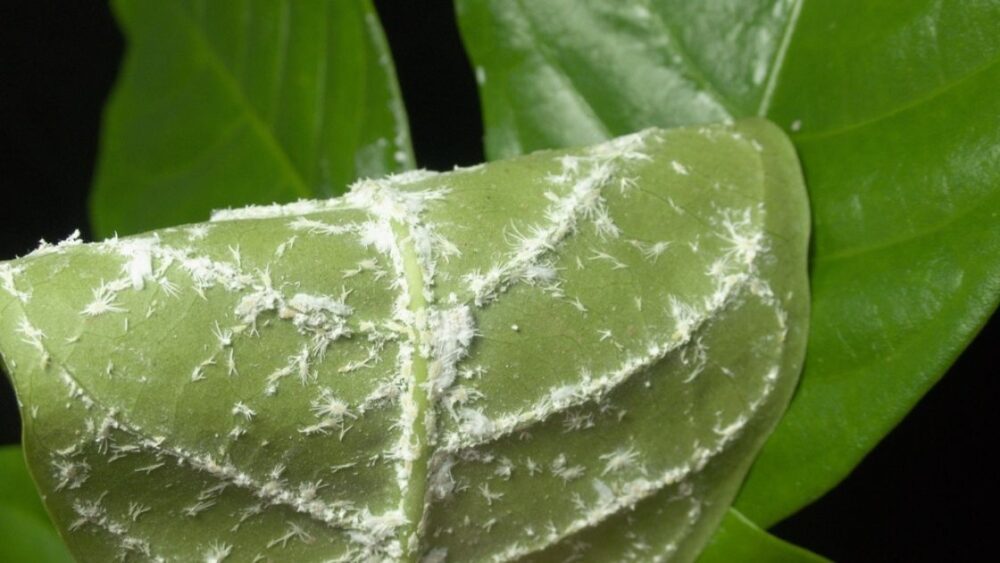
Apart from the usual suspects(scale insects, mealybugs), Stapelia can also be invaded by root pests, which may be difficult to spot. Woolly aphids are common, but are easy to spot, especially when the infestation has progressed.
Be on the look out for any white, uneven fuzzy formations – those are almost certainly tiny insects. A magnifying glass can be used to diagnose the problem earlier, making it much easier to cure.
There are many approaches to getting rid of pests and there are many insecticide products designed specifically for succulents.
If you want to go with the DIY route, various types of alcohol (methyl, ethyl and isopropyl) diluted with water usually work well. An even more conservative approach may be using soap water and cotton swabs to get rid of the invaders.
If the problem is persistent and comes back, it’s best to place the pot in a more ‘harsh’ location, where the bugs will have trouble surviving. This usually means outdoors, in direct sunlight.
If you also have a problem with roses, check out this article here. How do I keep aphids off my roses?
What Should You Do If Your Stapelia Appears to Be Dying?
One of the safest approaches for reviving a dying Stapelia plant is to simply turn it into cuttings, root them and plant them separately. This virtually guarantees the survival of the succulent.
At least 5 cuttings can usually be obtained, even from plants in poor health. Unfortunately, this process takes the longest time and more than a year may pass before a plant started from cuttings starts flowering again.
A more conservative approach is to take one or two cuttings (as an insurance) and then attempt to revive the dying plant. Repotting in a new soil, changing the location of the pot and experimenting with the watering frequency and fertilizer regime are all good approaches. It’s best to diagnose the issue, by taking into account the factors we already discussed in this article.
Does Stapelia Tolerate Unfavorable Growing Conditions?
Stapelia responds to low light conditions and lack of nutrition in the soil by simply growing more slowly and not flowering. The plant can’t deal with severe lack of light, poorly draining soil or a severe pest infestation and all of those can eventually kill it.
Final Thoughts
Stapelia is easy to care for and difficult to kill – even if you make a fatal mistake, the plant can be easily ‘re-started’ from collected cuttings. The most common causes of wilting are very basic – overwatering, underwatering, heat stress or a pest problem. If the problem can’t be accurately diagnosed, consider repotting and moving the plant, which is a simple ‘umbrella solution’ and fixes most problems.



